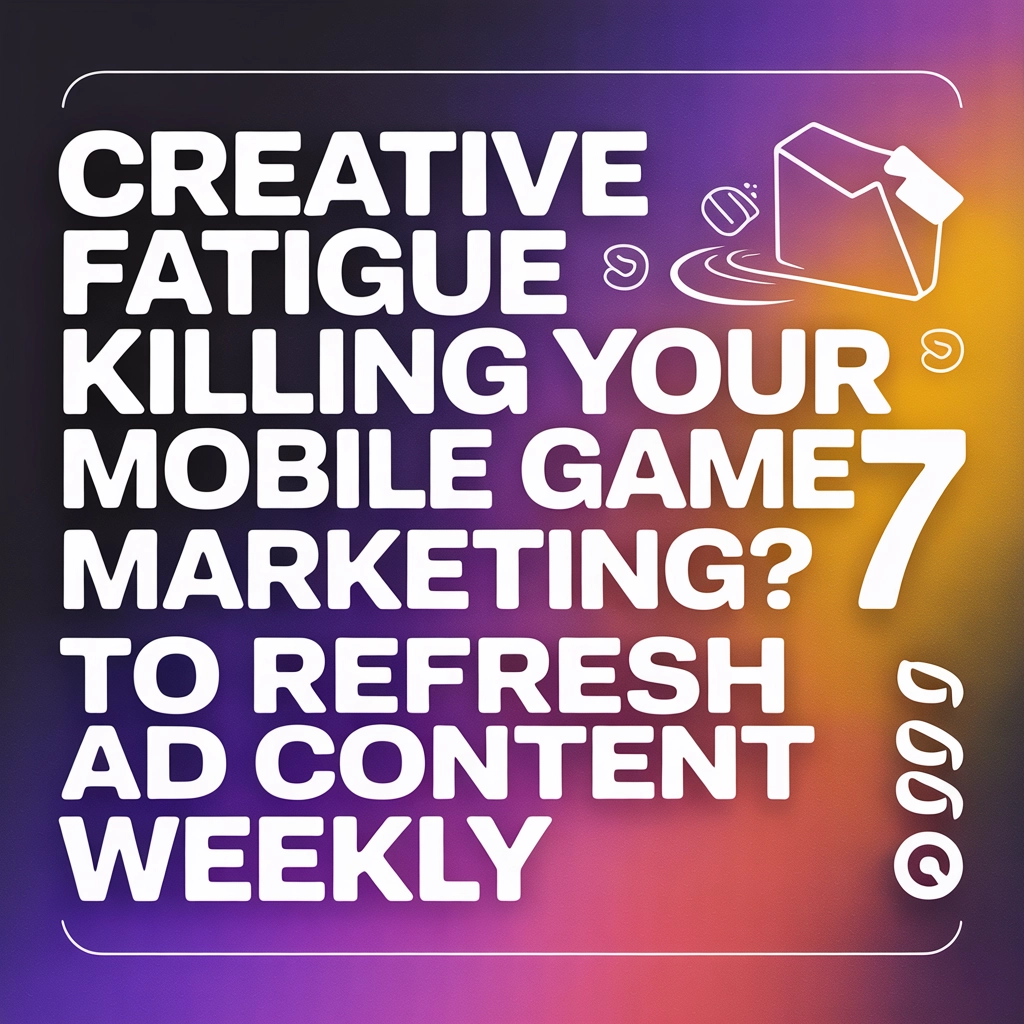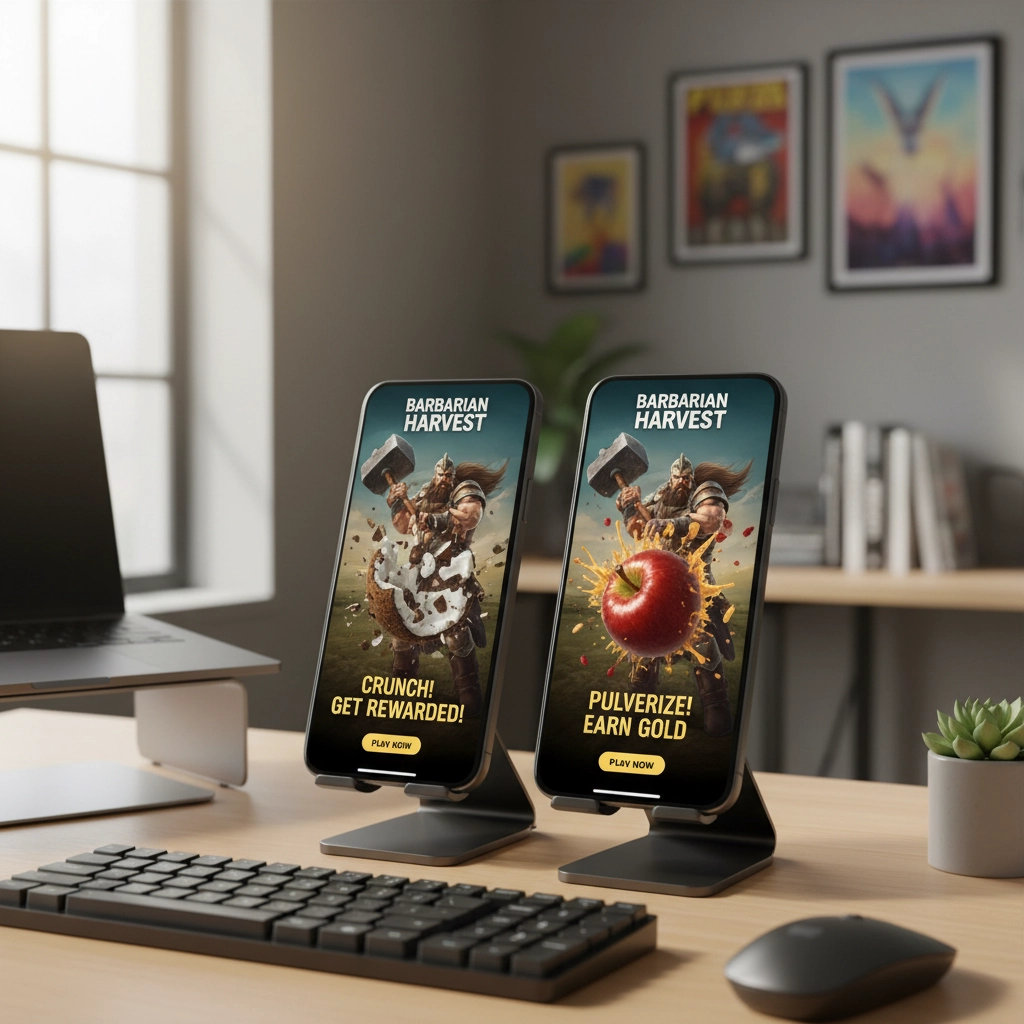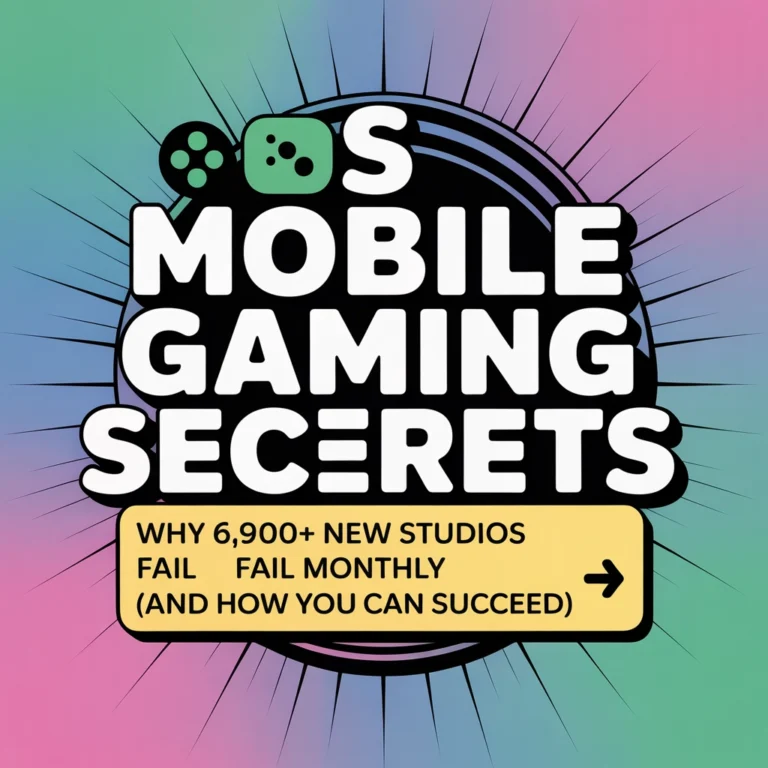Creative Fatigue Killing Your US Mobile Game Marketing? 7 Quick Hacks to Refresh Ad Content Weekly

Picture this: Your mobile game's ad campaign was crushing it last month – great CTRs, solid CPIs, and users were downloading like crazy. Fast forward to today, and those same ads are bleeding money faster than a leaky bucket. Sound familiar? Welcome to the world of creative fatigue, where even your best-performing ads eventually become yesterday's news.
If you're marketing mobile games in the US, creative fatigue isn't just an inconvenience – it's a budget killer. Facebook's algorithm starts penalizing you for overserving the same ad, charging higher prices while your click-through rates nosedive. With US mobile gaming acquisition costs already sky-high and audience pools shrinking faster than ever, weekly creative refreshes have become absolutely essential.
Here's the thing: most studios treat creative fatigue like it's some mysterious force they can't control. But the reality is, with the right weekly refresh strategies, you can stay ahead of the curve and keep your campaigns profitable. Let's dive into seven quick hacks that'll breathe new life into your ad content every single week.
1. The Color Swap Strategy: Visual Novelty Without the Rebuild
Sometimes the simplest changes pack the biggest punch. Instead of creating entirely new assets, start by changing your ad backgrounds and dominant colors weekly. This creates visual novelty without the headache of rebuilding your entire creative from scratch.
Switch up the background color of your gameplay footage, or rotate through different color schemes for your UI elements. Maybe your puzzle game's interface was blue last week – try orange or purple this week. The core message and gameplay showcase stay the same, but to scrolling users, it feels like fresh content.

This strategy works particularly well for mobile games because users make split-second decisions about whether to engage. A familiar game with a fresh color palette can catch their eye just long enough to spark interest again.
2. Hook Rotation for Video Ads: Multiple Entry Points
Video ads live or die by their first three seconds, and that's exactly where most studios get lazy. Instead of relying on one opening hook until it dies, create multiple different hooks and run them alongside each other from the start.
Rotate these opening sequences weekly – show different gameplay moments, various reward scenarios, or introduce different characters. Maybe this week you open with an epic boss battle, and next week you lead with the satisfaction of solving a challenging puzzle. Same game, different emotional entry points.
The beauty of hook rotation is that it lets you test what resonates with your audience while keeping repeat viewers engaged. Plus, when one hook starts showing fatigue, you've got fresh alternatives ready to go.
3. The Apple vs. Coconut Method: Small Changes, Big Impact
Here's a real example that'll blow your mind: One studio was running a creative showing a coconut being smashed. Performance started tanking, so instead of scrapping the entire concept, they swapped the coconut for an apple being punched. That tiny change breathed new life into the creative and significantly improved their metrics.

Every week, identify one key visual element in your top-performing ads and test a variation. Change the weapon, swap the enemy type, or alter the reward being showcased. These micro-changes can reset audience engagement without requiring major creative overhauls.
The key is thinking about equivalent substitutions that maintain the core appeal while providing visual variety. Your brain might think "coconut vs. apple" doesn't matter, but to an algorithm and tired eyeballs, it's the difference between scroll-past and click-through.
4. Cross-Platform Format Adaptation: Maximize Your Reach
Different platforms have different optimal formats, and what works on Facebook might flop on TikTok. Instead of creating platform-specific content from scratch, use AI tools that can automatically resize and adapt your creatives for different formats.
Each week, take your best-performing creative and optimize it for various placements – Instagram Stories, Facebook Feed, TikTok, YouTube Shorts, or Twitter. This ensures consistent messaging while maximizing your reach across channels.
The magic happens when you tailor the same core creative to each platform's unique characteristics. Your 15-second TikTok version might emphasize quick wins and instant gratification, while your YouTube version could showcase deeper gameplay mechanics.
5. The 70-20-10 Budget Rebalancing Framework
This proven allocation strategy should be your weekly ritual: 70% of your budget goes to top-performing content, 20% gets directed toward promising new ideas, and 10% stays reserved for experimental initiatives.
Every seven days, review and rebalance your creative portfolio. Promote successful experiments from your 10% tier to your 20% tier, and move proven winners from 20% into your main 70% budget allocation. Meanwhile, retire underperforming creatives to make room for fresh experiments.

This systematic approach prevents you from throwing good money after bad while ensuring you're always testing new creative directions. It's like having a farm system for your ad creatives – always developing the next generation while maximizing current performers.
6. Micro-Copy Variations: Words That Work Wonders
Never underestimate the power of fresh copy. Even subtle changes like a new headline can reset engagement without requiring new visual assets. Your gameplay footage might be identical, but "Defeat the Dragon King!" hits differently than "Conquer Epic Bosses!"
Weekly, test different call-to-action phrases, benefit statements, or urgency triggers. For mobile games, experiment with various reward messaging ("Collect Rare Heroes!" vs. "Build Your Army!"), progression highlights ("Level Up Fast!" vs. "Master New Skills!"), or competitive elements ("Climb the Leaderboards!" vs. "Dominate Your Rivals!").
The beauty of copy variations is speed – you can test new messaging within hours, not days. Keep a running list of high-performing phrases and rotate through them strategically.
7. Strategic Creative Pausing and Revival: The Power of Rest
Here's something counterintuitive: sometimes the best way to refresh a creative is to give it a break. Temporarily set aside burned-out concepts and return to them later – creatives have a surprising way of "resting" and regaining their effectiveness.
Maintain a rotation schedule where you pause creatives showing fatigue signals and reintroduce previously successful ads after 2-3 weeks. This approach leverages audience memory decay while maximizing the value of your creative assets.
Think of it like crop rotation – letting creative "fields" rest while others produce. You'll be amazed how a creative that was completely dead can suddenly spring back to life after a brief hiatus.

Putting It All Together: Your Weekly Action Plan
Monitor these fatigue indicators every week: declining click-through rates, rising cost-per-install, increased ad frequency, and reduced return on ad spend. For mobile games targeting the competitive US market, these signals can appear quickly – sometimes within just a few days.
Watch performance trends over 7-14 day windows rather than getting spooked by daily fluctuations. The narrower your target audience and the more geographically focused your campaigns, the more frequently you'll need to implement these refresh strategies.
Start small – pick two or three of these hacks and implement them consistently for a month. Once they become routine, add the others to your weekly workflow. The goal isn't to overhaul everything at once, but to build sustainable habits that keep your creative performance humming.
Creative fatigue doesn't have to be a death sentence for your mobile game marketing campaigns. With these seven weekly refresh strategies, you can stay ahead of algorithm penalties, maintain audience engagement, and protect your user acquisition costs in the brutal US mobile gaming market. The studios that master weekly creative refreshes are the ones that'll thrive while their competition burns through budgets on stale content.
Remember, in mobile game marketing, standing still is moving backward. Keep your creatives fresh, your audience engaged, and your campaigns profitable with consistent weekly refreshes that turn creative fatigue from enemy into opportunity.






